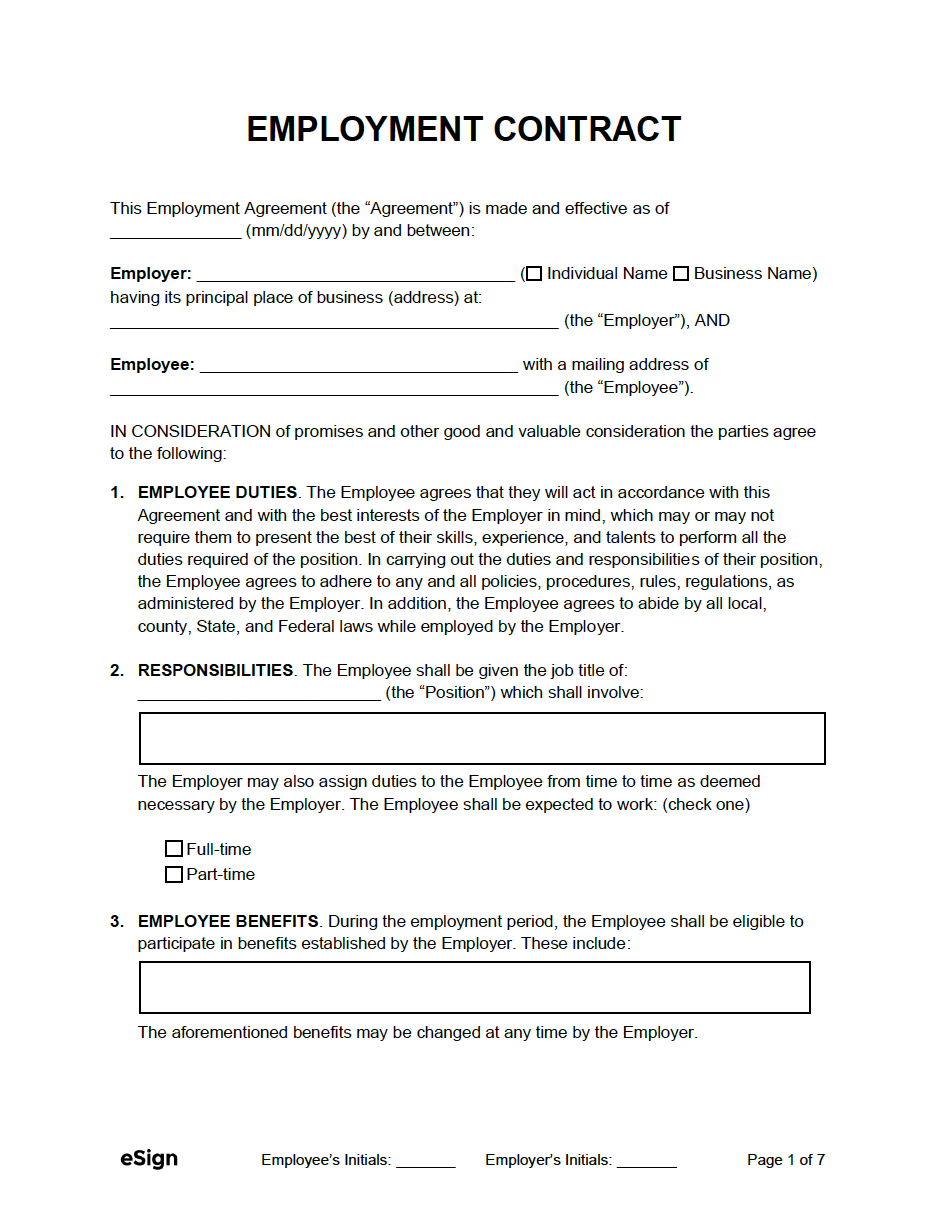By State
- Alabama
- Alaska
- Arizona
- Arkansas
- California
- Colorado
- Connecticut
- Delaware
- Florida
- Georgia
- Hawaii
- Idaho
- Illinois
- Indiana
- Iowa
- Kansas
- Kentucky
- Louisiana
- Maine
- Maryland
- Massachusetts
- Michigan
- Minnesota
- Mississippi
- Missouri
- Montana
- Nebraska
- Nevada
- New Hampshire
- New Jersey
- New Mexico
- New York
- North Carolina
- North Dakota
- Ohio
- Oklahoma
- Oregon
- Pennsylvania
- Rhode Island
- South Carolina
- South Dakota
- Tennessee
- Texas
- Utah
- Vermont
- Virginia
- Washington
- West Virginia
- Wisconsin
- Wyoming
Contracts: By Type (4)
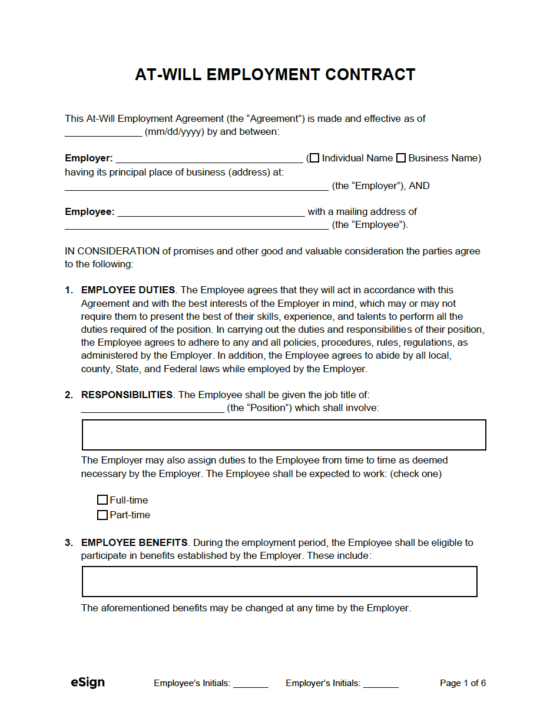
Download: PDF, Word (.docx), OpenDocument

Download: PDF, Word (.docx), OpenDocument
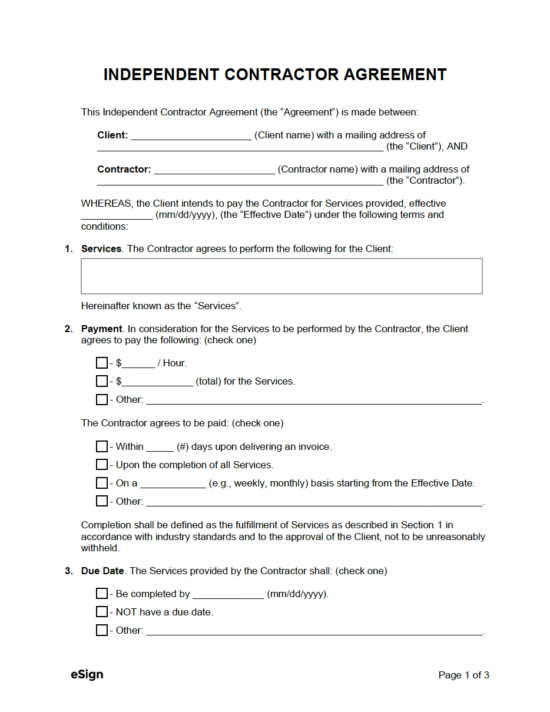
Download: PDF, Word (.docx), OpenDocument
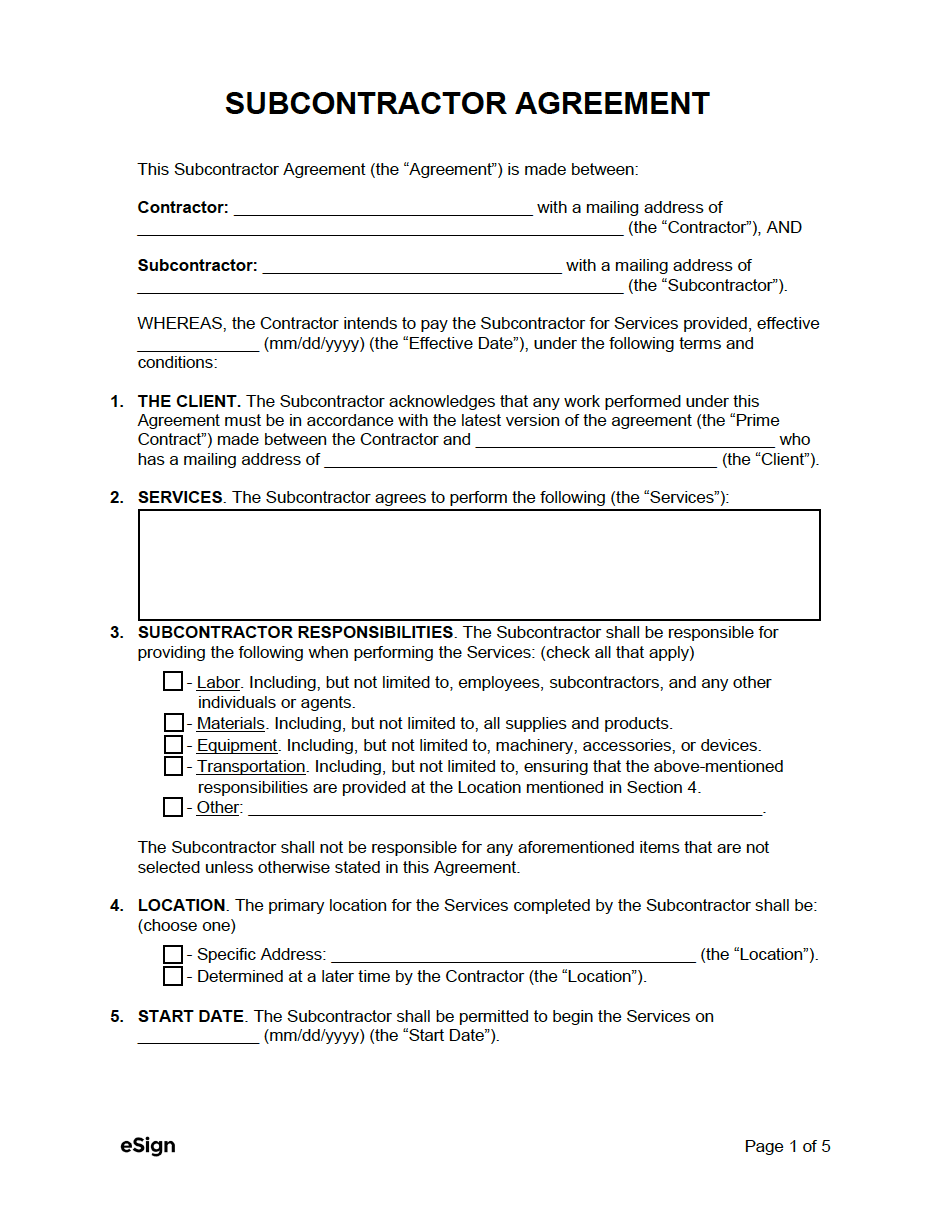
Download: PDF, Word (.docx), OpenDocument
Addendums / Supplemental Forms (4)
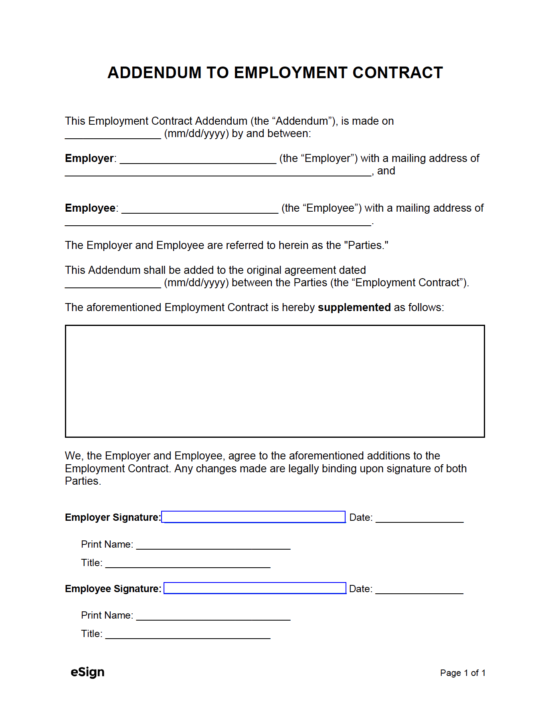
Download: PDF, Word (.docx), OpenDocument

Download: PDF, Word (.docx), OpenDocument
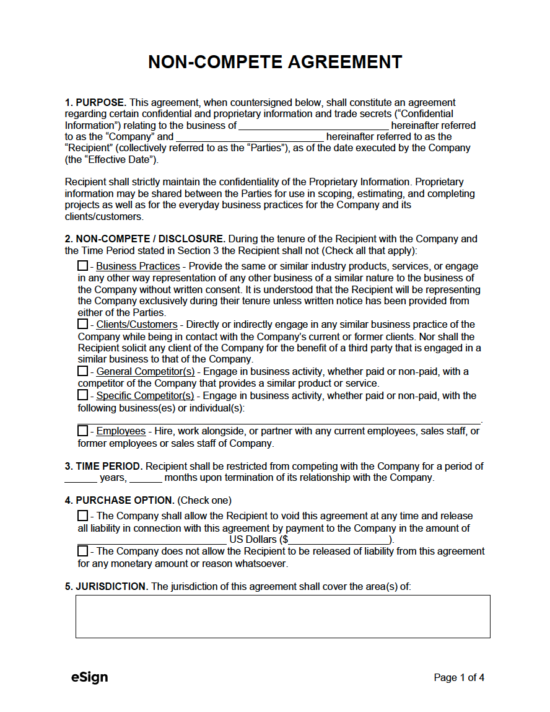
Download: PDF, Word (.docx), OpenDocument

Download: PDF, Word (.docx), OpenDocument
Contents |
Sample Employment Contract
EMPLOYMENT CONTRACT
This Employment Agreement (the “Agreement”) is made and effective as of [MM/DD/YYYY] by and between:
Employer: [EMPLOYER NAME] having its principal place of business at [EMPLOYER ADDRESS] (the “Employer”), AND
Employee: [EMPLOYEE NAME] with a mailing address of [EMPLOYEE ADDRESS] (the “Employee”).
IN CONSIDERATION of promises and other good and valuable considerations, the parties agree to the following:
1. EMPLOYEE DUTIES. The Employee agrees that they will act in accordance with this Agreement and with the Employer’s best interests in mind, which may or may not require them to present the best of their skills, experience, and talents to perform all the duties required of the position. In carrying out the duties and responsibilities of their position, the Employee agrees to adhere to any and all policies, procedures, rules, and regulations as administered by the Employer. In addition, the Employee agrees to abide by all local, county, State, and Federal laws while employed by the Employer.
2. RESPONSIBILITIES. The Employee shall be given the job title of [POSITION] (the “Position”), which shall involve: [DESCRIBE EMPLOYEE POSITION].
The Employer may also assign duties to the Employee from time to time as deemed necessary by the Employer. The Employee shall be expected to work: (check one)
☐ Full-time
☐ Part-time
3. EMPLOYEE BENEFITS. During the employment period, the Employee shall be eligible to participate in benefits established by the Employer. These include:
[DESCRIBE EMPLOYEE BENEFITS].
The aforementioned benefits may be changed at any time by the Employer.
4. EMPLOYMENT PERIOD. The Employer agrees to hire the Employee: (check one)
☐ – At-Will (Option 1), which means this Agreement may be terminated at any time by either the Employee or Employer. After termination by either of the Parties, neither will have any obligation other than the non-disclosure of the Employer’s proprietary information as outlined in Section 13 and any non-compete listed in Section 14.
☐ – For a Specified Time-Period (Option 2), beginning on [MM/DD/YYYY] and ending on [MM/DD/YYYY]. At the end of the said time period, both parties will no longer have any obligation to one another.
5. PAY. As compensation for the services provided, the Employee shall be paid $[PAY] ☐ per hour ☐ salary on an annual basis (the “Compensation”).
The Compensation is a gross amount subject to all local, State, Federal, and other taxes and deductions as prescribed by law. Payment shall be distributed to the Employee on a [FREQUENCY] basis.
a) Commissions. In addition to the aforementioned Pay, the Employee shall be entitled to commissions that are to be paid every [FREQUENCY] and shall be calculated as follows: [COMMISSION CALCULATION (IF ANY)].
b) Bonus. The Employee shall be entitled to Bonuses on a [FREQUENCY], basis which is to be calculated as follows: [BONUS CALCULATION (IF ANY)].
6. OUT-OF-POCKET EXPENSES. The Employer agrees to reimburse the Employee for any expenses that are incurred, including (check all that apply)
☐ – Travel
☐ – Food
☐ – Lodging
☐ – Other: [OTHER EXPENSES].
7. OWNERSHIP INTEREST. This Agreement ☐ SHALL NOT ☐ *SHALL include partial ownership in the business operations of the Employer. *If such ownership is offered, the details shall be stated in an attached Exhibit.
8. TRIAL PERIOD. Other than certain benefits prescribed by law, the Employee will not be eligible for Benefits, Vacation Time, or Personal Leave until after the first [#] days of employment (the “Trial Period”). In addition, the Employee will not be eligible for vacation time, sick leave, or any time off that would be paid or unpaid.
9. VACATION TIME. After the Trial Period is complete, the Employee is entitled to [#] days off per year It is required for the Employee to give notice before scheduling their vacation per Company policy.
Any unused Vacation Time shall be (check one):
☐ – Converted to cash at the end of the year at a rate of $[RATE] per day.
☐ – Eligible to roll over up to [#] days to the following year.
☐ – Forfeited at the end of the year.
☐ – Other: [OTHER].
10. PERSONAL LEAVE. After the Trial Period, the Employee shall be eligible for [#] days of ☐ paid ☐ unpaid time off per year for personal or medical issues.
Any unused Personal Leave shall be: (check one)
☐ – Converted to cash at the end of the year at a rate of $[RATE] per day.
☐ – Eligible to roll over up to [#] days to the following year.
☐ – Forfeited at the end of the year.
☐ – Other: [OTHER].
If for any reason the Employee depletes their allotted number of days of personal leave in a given year, the Employee ☐ MAY ☐ MAY NOT be able to use any remaining vacation time.
11. FEDERAL HOLIDAYS. The Employee shall be entitled to [#] federal holidays per calendar year. This is subject to change by the Employer from time to time. If for any reason the Employee should request a Federal Holiday off, the Employer shall determine if the Employee may do so and if it shall be taken from either the Employee’s Personal Leave or Vacation Time. Federal Holidays are determined by the Employer and may change every calendar year.
12. DISABILITY. If, for any reason, the Employee cannot perform their duties by physical or mental disability, the Employer may terminate this Agreement by giving the Employee [#] days’ written notice.
13. CONFIDENTIALITY. The Employee understands and agrees to keep any and all information confidential regarding the business plans, inventions, designs, products, services, processes, trade secrets, copyrights, trademarks, customer information, customer lists, prices, analytics data, costs, affairs, and any other information that could be considered proprietary to the Employer (the “Confidential Information”). The Employee understands that disclosure of any such Confidential Information, either directly or indirectly, shall result in litigation with the Employer eligible for equitable relief to the furthest extent of the law, including, but not limited to, filing claims for losses and/or damages. In addition, if it is found that the Employee divulged Confidential Information to a third (3rd) party, the Employer shall be entitled to any and all reimbursement for their legal and attorney’s fees.
a) Post Termination. After the Employee has terminated their employment with the Employer, the Employee shall be bound to Section 13 of this Agreement for a period of [#] months (the “Confidentiality Term”). If the Confidentiality Term is beyond any limit set by local, State, or Federal laws, then the Confidentiality Term shall be the maximum allowed legal time frame.
14. EMPLOYEE’S ROLE. The Employee ☐ SHALL ☐ SHALL NOT have the right to act in the Employer’s capacity. This includes, but is not limited to, making written or verbal agreements with any customer, client, affiliate, vendor, or third (3rd) party.
16. APPEARANCE. The Employee must appear at the Employer’s desired workplace when scheduled. If the Employee does not appear, for any reason, on more than [#] separate occasions in a 12-month calendar period, the Employer has the right to terminate this Agreement immediately. In such an event, the Employee would not be granted severance as stated in Section 4.
17. NOTICES. All notices sent under this Agreement shall be done in writing and delivered via Certified Mail to the Principal Office Address (Employer) and to the mailing address (Employee). The aforementioned addresses may be changed with the act of either party providing written notice.
18. COMPLIANCE. The Employee agrees to adhere to all sections of this Agreement in addition to any rules, regulations, or conduct standards of the Employer, including obeying all local and federal laws. If the Employee does not adhere to this Agreement, company policies, including any task or obligation that is related to the responsibilities of their position, the Employer may terminate this Agreement without severance as stated in Section 3.
19. RETURN OF PROPERTY. The Employee agrees to return any and all property of the Employer upon the termination of employment. This includes, but is not limited to, equipment, electronics, records, access, notes, data, tests, vehicles, reports, models, or any property that is requested by the Employer.
20. AMENDMENTS. This Agreement may be modified or amended if any such amendment is attached and authorized by all parties.
21. SEVERABILITY. This Agreement shall remain in effect if a section or provision is unenforceable or invalid. All remaining sections and provisions shall be deemed legally binding unless a court rules that any such provision or section is invalid or unenforceable, thus, limiting the effect of another provision or section. In such case, the affected provision or section shall be enforced as so limited.
22. WAIVER OF CONTRACTUAL RIGHT. If the Employer or Employee fails to enforce a provision or section of this Agreement, it shall not be determined as a waiver or limitation. Either party shall remain the right to enforce and compel the compliance of this Agreement to its fullest extent.
23. GOVERNING LAW. This Agreement shall be governed under the laws in the State of [STATE].
24. ENTIRE AGREEMENT. This Agreement, along with any attachments or addendums, represents the entire agreement between the parties. Therefore, this Agreement supersedes any prior agreements, promises, conditions, or understandings between the Employer and Employee.
25. SIGNATURES. IN WITNESS WHEREOF, this Agreement was signed by the parties under the hands of their duly authorized officers and made effective as of the undersigned date.
Employer Signature: ____________________ Date: [MM/DD/YYYY]
Print Name: [PRINTED NAME]
Title: [TITLE]
Employee Signature: ____________________ Date: [MM/DD/YYYY]
Print Name: [PRINTED NAME]
Title: [TITLE]
What is an Employment Contract?
An employment contract is a written document completed and signed at the beginning of a person’s employment with a business. The form is popular in many industries and helps employees understand their role and what benefits they can expect in exchange for their hard work. With a standard contract in place, organizations can systemize their disciplinary process, resulting in fair and impartial treatment to those they employ.
What’s Covered?
While the employer can pick and choose whichever topics they feel are necessary to include in the form, the average employment agreement covers the following matters:
- Payment (salary/wage/bonuses)
- Employee rules and responsibilities
- Employment length
- Dispute resolution
- Benefits (e.g., insurance, PTO, holidays)
- Grounds for termination
- Non-disclosure / confidentiality
When is it Recommended?
An employment contract should be used whenever a company (or person) wants to exercise greater control over the terms of employment for a specific new hire. Additionally, the employer could use the document to attract top-quality talent by guaranteeing certain benefits, pay, and ownership to those hired.
The majority of employment contracts are used for special situations, for employees that are of great importance to the company or will have a unique payment structure compared to other workers.
Note on “At-Will” Employees
The majority of employees are considered “at-will” in the United States. “At-will” means either the employer or the employee can end their working arrangement at any time (with little to no warning) and for almost any reason.
Some employment contracts result in the employee no longer being considered “at-will” after signing. This can be due to the contract specifying a specific start and end date or laying out the conditions that make quitting acceptable. As long as the “at-will” option is selected on the form, both the employer and employee will retain the ability to terminate employment at any time.
What’s Included
Employee Duties & Responsibilities
Establishes the employee’s obligations to the employer, ensuring compliance with the company’s policies, rules, and regulations. It outlines the worker’s job title and the exact duties they will be responsible for completing. This section can be customized to whatever specific procedures a corporation may have.
Employment Period
Covers how long the employee will be working for the entity. Most contracts are “at-will,” meaning either the employee or employer can end the working relationship at any time.
Compensation / Pay
Outlines how the worker will be compensated for their work and establishes whether they will be paid hourly or salaried. The frequency of payment and any commissions and bonuses they may be eligible to receive will be included.
Trial Period
Also known as a “probationary period,” this optional clause allows employers to evaluate whether a newly hired employee is a good fit for the job. The length of the trial period is up to the hiring entity but will often last anywhere from thirty (30) to ninety (90) days.
By having new hires work on a trial basis, the company can hold off on providing the worker certain benefits (like health insurance, for example), which can save considerable amounts of time if the business anticipates hiring a lot of probationary workers. Furthermore, the trial period gives the new hire a way of “feeling out” the corporation to see if it is right for them.
Confidentiality
Including a section on confidentiality is highly recommended for companies. While “confidential information” is a broad term that can encompass many areas, it generally refers to information (whether written or spoken) that is not publicly available, belongs solely to the company, and could endanger the company’s competitive advantage if it were to be shared with certain 3rd parties. A major feature of the clause is that it can bind employees to safeguard information even if they are no longer employed by the business.
For companies that are only looking to protect their trade secrets and other private information (and don’t require the other clauses found within an employment contract), a non-disclosure agreement can be used.
Non-Compete / Non-Solicitation
Similar to the “Confidentiality” section, a “non-compete” clause prevents employees from working with certain companies or in specific industries after their employment is terminated. This is designed to prevent an employee from doing any of the following things:
- Divulging trade secrets to persons employed by or involved with a competitor.
- Creating their own company and going into competition with the employer (by utilizing learned confidential information).
- Stealing customers/clients/vendors from the employer.
A standalone non-compete agreement can be used as an alternative to the non-compete clause.

